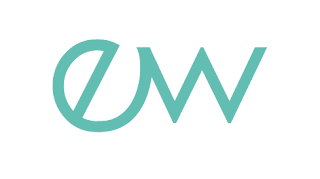Objective:
The main objective of this project is to create a cohesive set of well-executed portfolios that will ultimately hep me obtain a job and impress future possible employers. I will find a system and way of organization that will resonate across all three portfolios (presentation, e-mail, and online). Each portfolio will reflect my personality and style as a designer, but will also be presented in a professional manner. The strongest pieces of my design work (either class, extra curricular activity, or internship pieces) will be arranged to present myself as a professional designer and show my range of capabilities. Each project will also be representative of an experience I've had while working on a design project (such as working in groups, delegating others, etc.). Much thought and time will be had on this project because a portfolio isn't just a container for showing my work; it is a design piece in itself as well.
Criteria for Success:
In order for these portfolios to be successful, the pieces in the portfolios must have a consistent organization. This would mean that the same pieces would be in the same order in each of the three portfolios so there is a consistency among them. The display of each one will be clean and simple to reflect my personal style and appear professional to potential employers who view it. The prints in the presentation portfolio will be printed by an outside printer so the quality is the best it can be. The e-mail portfolio will not exceed 5MB to make sure it is easily e-mailed and anyone it is sent to will be able to open it. In order to keep track of the process of the portfolio creation and to make sure I am accountable for completing tasks on my timeline, postings will frequently be made on my personal blog.
Items Included in the Project:
There will ultimately be three different portfolio presentation pieces. The main portfolio will be the presentation portfolio. A leather-bound case will be purchase in a size that will be acceptable for transporting and displaying to employers (14x17 inches). This portfolio will be given the most time and attention, although the others will be made at the same time. The content within each portfolio will be the same for all three. The pieces chosen will be well-executed and recent as well as show my design abilities. The pieces will be arranged starting with my strongest piece, and ending with another strong piece so the beginning and end of the presentation is memorable. The rest of the pieces will be arranged in a way that shows a wide variety of design skills, and a diverse selection of types of design pieces.
Completion and Execution:
The presentation portfolio will be used in professional settings such as a job interview. The people that will be viewing this will be potential employers as well as other professionals who will critique it (so I can make revisions). The online portfolio will be on a website that allows individuals to display their work and view others' as well (Behance.com). The link to this portfolio site will be beneficial to send to potential employers once an interview is set up so they can view some of my work before the interview. During the interview I will then have the chance to further explain my pieces because they will be familiar with them already. The same idea will go for the e-mail portfolio. This one will especially be useful if the interview cannot be in person, or I want a more direct way to show someone my portfolio. The e-mail portfolio will also be beneficial because it shows my design abilities, rather than just displaying my work on a generic site. It will also accurately be cohesive with my stationary system. In all three portfolio pieces, the content will continue to change as I design more recent work. I will be sure to update each portfolio with new and better work once some of them get older.
Timeline:
- February 4: Project brief/timeline completed
- February 4: Review all work and choose some for portfolios
- February 14: Class meeting (review project brief)
- February 23: Presentation portfolio case ordered online
- March 3: Place in various design projects into presentation portfolio (ready for critique)
- March 3: AIGA Get a Job Bootcamp (multiple portfolio reviews)
- March 15: Choose content that will be included in each portfolio (with room to add more later)
- March 15: Continue to place in work on online portfolio site
- April 5: Class meeting (discuss stationary system)
- April 5: Take photos of projects after class (keeping a consistent style among the photos)
- April 8: Start finalizing e-mail portfolio with newly decided stationary system
- April 9: Start setting up portfolio reviews with professionals
- April 22: Multiple portfolio reviews are completed
- April 24: Class portfolio review
- April 24: Revisions from critiques are made and all portfolios begin to be finalized
- May 10: All work is turned in




















